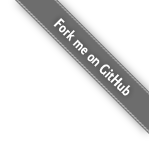Optimize your problems using KIE Execution Server
KIE Server provides separation of execution environment from your client application, making it easy to use OptaPlanner outside Java ecosystem (e.g. .NET). In the 7 release stream, we worked to improve OptaPlanner/KIE Server integration. The new API is less verbose and more intuitive. Let’s take a closer look at its usage in more detail.
How a typical workflow looks like?
-
Install your optimization app kjar to a maven repository accessible by the KIE Server. This step assumes the following conditions are met:
-
kmodule.xmlfile is located inMETA-INFfolder of your project. -
Project uses packaging type
kjar. -
kie-maven-pluginis configured for the project.
<build> <plugins> <plugin> <groupId>org.kie</groupId> <artifactId>kie-maven-plugin</artifactId> <version>${version.org.kie}</version> <extensions>true</extensions> </plugin> </plugins> </build> -
-
Create a container (server unit of execution) wrapping the project. This example uses Java KIE Server client, which performs REST calls in the background.
The following dependencies are required in your client application. Make sure to use version 7.0.0.Final, or later.
<dependency> <groupId>org.kie.server</groupId> <artifactId>kie-server-api</artifactId> </dependency> <dependency> <groupId>org.kie.server</groupId> <artifactId>kie-server-client</artifactId> </dependency>Client and container creation:
KieServicesConfiguration kieServicesConfiguration = new KieServicesConfigurationImpl(SERVER_URL, USERNAME, PASSWORD, CLIENT_TIMEOUT); KieServicesClient kieServicesClient = KieServicesFactory.newKieServicesClient(kieServicesConfiguration) // ReleaseId corresponds to groupId:artifactId:version (GAV) of the project installed in the first step ReleaseId releaseId = new ReleaseId("org.optaplanner", "kie-server-example", "1.0.0-SNAPSHOT"); KieContainerResource containerResource = new KieContainerResource(CONTAINER_ID, releaseId); kieServicesClient.createContainer(CONTAINER_ID, containerResource); -
Create a solver within the container. A single container can hold multiple solvers, each of them having a unique identifier. This is useful if you want to try out different solver configurations.
SolverServicesClient solverClient = kieServicesClient.getServicesClient(SolverServicesClient.class); solverClient.createSolver(CONTAINER_ID, SOLVER_ID, SOLVER_CONFIG_XML_PATH); -
Submit your optimization problem
CloudBalance cloudBalance = loadPlanningSolution(); solverClient.solvePlanningProblem(CONTAINER_ID, SOLVER_ID, cloudBalance); -
Check the solver state. At this point of time the best solution notifications are not supported yet on the client side, you need to periodically check the solver status/best solution.
SolverInstance solver = solverClient.getSolver(CONTAINER_ID, SOLVER_ID); if (solver.getStatus() == SolverInstance.SolverStatus.SOLVING) { // continue } else { CloudBalance cloudBalance = (CloudBalance) solverClient.getSolverWithBestSolution(CONTAINER_ID, SOLVER_ID).getBestSolution() // process the solution } -
Once you are done with the optimization, terminate the solver.
solverClient.terminateSolverEarly(CONTAINER_ID, SOLVER_ID); -
If you don’t plan to reuse the solver anymore, dispose it to free the resources on the server.
solverClient.disposeSolver(CONTAINER_ID, SOLVER_ID);
New OptaPlanner REST API overview
The following table shows an overview of the new API introduced in version 7.0.0.Final.
All solver action URLs are normally prefixed by container URL, e.g. http://${kie-server}/services/rest/server/containers/${container_id},
which is not included in the table to keep the output short.
| Action | Method | URL suffix | Payload |
|---|---|---|---|
Register solver |
PUT |
solvers/${solver_id} |
- |
Get solver |
GET |
solvers/${solver_id} |
SolverInstance object |
Submit solution |
POST |
solvers/${solver_id}/state/solving |
Solution object |
Get best solution |
GET |
solvers/${solver_id}/bestsolution |
SolverInstance object including the best solution |
Terminate solver |
POST |
solvers/${solver_id}/state/terminating-early |
- |
Dispose solver |
DELETE |
solvers/${solver_id} |
- |
Where do I start?
Check KIE Server Integration chapter of OptaPlanner Workbench quickstart or OptaPlanner REST API documentation for more details on the API.
Optionally try out KIE Workbench, which integrates with the KIE Server. The following video demonstrates the process of setting up a Workbench example and optimizing it using the KIE Server.
Conclusion
KIE Server provides an alternative way of optimizing your constraint satisfaction problems. If you want to offload workload to cloud (possibly with a large amount of resources), or you use non-Java client, KIE Server is the right pick.





Comments
Visit our forum to comment